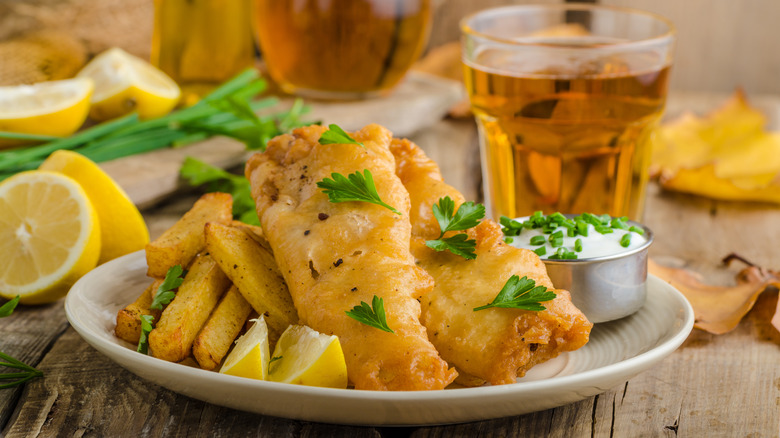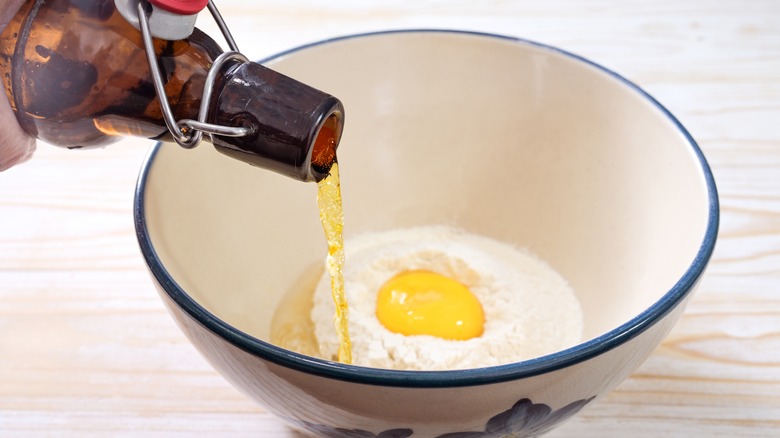Science Says Beer Batter Tastes Better For A Reason
The search for the best ingredients to create the crispiest, tastiest batter never ends, from adding fish sauce to copying how Koreans make their corn dogs crunchier. But while using beer to make batter isn't new, there's a reason why it has endured as a choice for making deep-fried dishes more delicious. Even though there are instances where it's not the best choice for cooking, scientific research points to beer batter's natural qualities for imparting a satisfying crunch and flavor to the food it coats.
For starters, the carbonization of beer plus its foaming agents and alcohol content make it a great batter base. Once beer enters the hot oil in the deep fryer, its air bubbles escape to create a "lifting" and expanding effect on the batter. This results in a crust with a porous, lace-like texture that easily snaps with a bite. What keeps these bubbles from bursting immediately in the fryer are the beer's foaming agents, some of which are naturally occurring proteins. They protect the bubbles by forming a thin film around them, and they also absorb most of the heat even when the oil reaches and exceeds 266 F, turning the batter golden and crispy.
Meanwhile, the food inside continues to cook at a normal rate without burning or drying up. Since alcohol also evaporates faster than water, it doesn't take long for beer batter to cook. Not only does it cut down the cooking time, you also avoid overcooking the dish.
The sugars, protein, and carbonation in beer create the desired Maillard reaction
It's important to note that carbonation makes beer acidic. When it gets combined with flour, the acidity helps prevent the formation of gluten, which is what makes batter tough when fried. (This also applies to any carbonated drink, including non-alcoholic beer and seltzer.) Combine this lightness with the lace-like patterns that the bubbles form, and you basically have your ideal deep-fried crust. The sugars in beer also contribute a lot to how beer batter becomes golden brown and richer-tasting compared to a water-based one.
All these factors combine to create the Maillard reaction, a process where applying heat to sugar and amino acids brings out the different tastes, textures, and aromas of a dish's ingredients, causing them to interact with each other and create a wholly different flavor. This chemical reaction serves as a signal to our senses that a dish is safe to eat. It's also an aspect of how we enjoy food not just with our taste buds but also with our sight, hearing, and sense of smell.
Still, as mentioned, there are risks involved when using beer to make batter. For one, don't rely on it alone for flavor. Season the food itself properly. Avoid preparing your beer batter ahead of time, too, since its oils disintegrate pretty quickly. Otherwise, you'll still end up with a soggy crust. Do a second flour dredging after coating food with beer batter as well to ensure maximum crispness.

